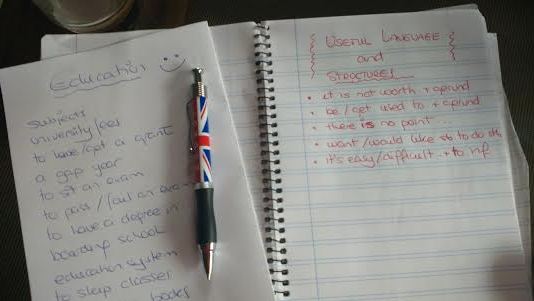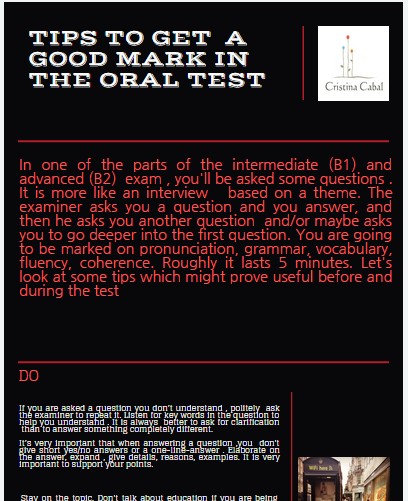Yes, it’s this time of the year. My students’ second term has already finished. Time to start a new one. The last one. It’s when every single year, I have serious doubts about whether I should be doing something else to help them improve. It’s like the yin and yang. The selfish side of my brain tells me I am giving them my best, staying up late preparing classes, creating new material students seem to swallow in 5 minutes …etc- and here 🙂 I cannot but remember my grandmother when she complained about how quickly we ate everything it took her all morning to cook- ; while the other side of me keeps reminding me of all the times I had to rush through a specific point or how on a particular day we didn’t have time enough to discuss a given issue in detail…etc.
But the truth is that although I should say that I honestly think I am doing my part, sadly the truth is that some students, unfortunately more than I wish, don’t seem to be able to understand that
Studying+Practising= Improving
The main difficulty my students need to overcome is their insecurities. They feel safe using a limited number of structures and they are afraid to use the new ones. New structures, new vocabulary is like a challenge to them and it is my intention to help them rise to this challenge; so this is what I’ll be trying next time we focus on Speaking.
1. FIXED PAGE
I am going to ask my students to write at the back of their notebooks some structures we have learnt this year; structures they instinctively know would show they have acquired the necessary level, like for example:
• It is not worth+gerund
• Get/be used to +gerund
• There is no point ….
• Want/ would like someone to do something
• It’s easy/difficult /nice + to infinitive
Students should be aware that this is their own personal list, to which they will be adding new structures or expressions they want to use as we move on towards the end of the course.

2. MOVABLE PAGE.
Most of the activities we do in class are topic centred, so we talk food, health or technology. Lessons in textbooks are also normally topic – based, and they provide students with the necessary vocabulary, phrasal verbs, readings …etc.
Before we start speaking about a given topic I am going to ask them to write on separate piece of paper all the vocabulary, expressions, idioms they can remember related to the topic. This should take like about two minutes and will give them an idea of how much they already know and how much they still need to study and then I am going to ask them to compare it with their partners to give them the opportunity to add any new ones they might have forgotten.
FIXED +MOVABLE PAGES. Once the speaking task is set, students will need to try to use as much vocabulary written on their movable page and as many expressions as they have at the back of their books. My experience is that most students tend to rush and just speak without caring about the structures or vocabulary they use, so I’m pretty sure that if I want this experiment to be successful I’ll need to use lot of persuasion and monitoring, but I think it’s worth a try. What do you think?


 In this post you’ll find some material to practise describing two pictures about
In this post you’ll find some material to practise describing two pictures about  Useful Expressions:
Useful Expressions: Some ideas to help you:
Some ideas to help you: Some ideas to help you:
Some ideas to help you:


